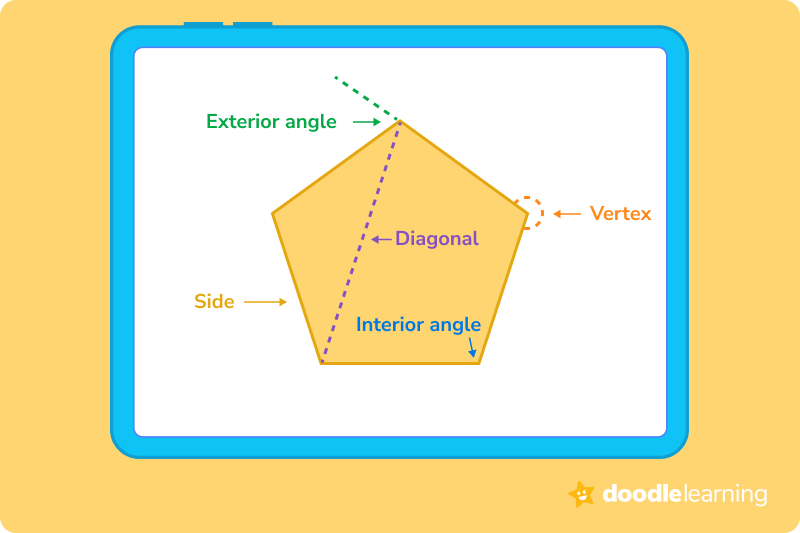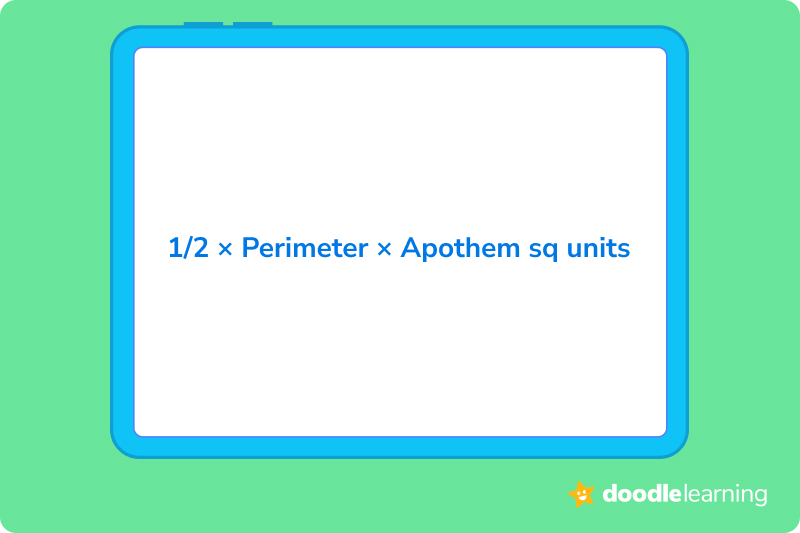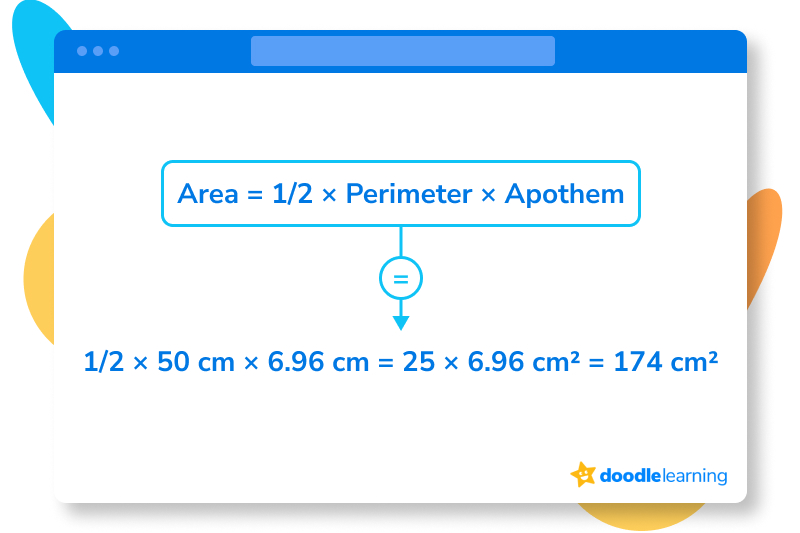Learn all about this 5-sided shape, its properties, examples, and real-life application.

Author
Taylor Hartley

Expert Reviewer
Jill Padfield
Published: July 2024


Learn all about this 5-sided shape, its properties, examples, and real-life application.

Author
Taylor Hartley

Expert Reviewer
Jill Padfield
Published: July 2024




Learn all about this 5-sided shape, its properties, examples, and real-life application.

Author
Taylor Hartley

Expert Reviewer
Jill Padfield
Published: July 2024


Key takeaways
Today, we’ll be discussing our five-sided friend, the pentagon! From a common stop sign to the tiles on your bathroom floor, pentagons are a common shape you’ll run into in your everyday life. It might be nice, then, to understand how they work and the kinds of formulas we can use to calculate their perimeter and their area.
Ready to dive in? Let’s get going.
A pentagon is a five-sided polygon with five interior angles that add up to 540°. It’s another one of our classic 2-D shapes, meaning it exists on a flat plane just like your average triangle, square or circle.
A pentagon resembles a house with a pointed roof! There are five sides in total with five angles at each of the shape’s vertices (the points where lines join to form angles).
There are a few key parts you’ll need to know in order to identify the perimeter or area of a pentagon. These include:

There are a few key parts you’ll need to know in order to identify the perimeter or area of a pentagon. These include:

Did you know? The headquarters for the U.S Department of Defense is actually named The Pentagon, and it’s shaped just like one too!
Unlock unlimited maths questions
Put your skills to the test with fun exercises + maths games that are proven to boost ability!
DoodleLearning is an award-winning app that’s filled with thousands of questions and games aligned. tothe national curriculum!
Designed by teachers, it creates each child a unique work programme tailored to their needs, doubling their progression with just 10 minutes of use a day. Try it for free!


There are a few different categories of pentagons we’ll encounter including regular pentagons, irregular pentagons, convex pentagons, and concave pentagons. You can identify the kind of pentagon you’re dealing with by identifying the types of angles the pentagon has, what the sums of these angles are, and how the pentagon itself is shaped. Follow along as we examine the four different categories of our five-sided friends.
Regular pentagons have five equal sides and five equal interior angles. If each of the five sides have an equal length, and each of the five angles have an equal measurement, the pentagon is considered regular. Just remember: regular means equal.
Irregular pentagons are defined as pentagons with unequal values for both side length and angle measurements. Because of this, irregular pentagons aren’t symmetrical and will look more elongated or flattened.
Convex pentagons are unique because all of their vertices point outward. This means that none of the sides of a convex pentagon point inward. Each of them point outward to create an outward facing vertex.
Concave pentagons are the opposite of convex, because they include at least one vertex that points inward. Think of the meeting of each side as the formation of an arrow. If the point of the arrow (the vertex) is facing inward, the shape is concave. If it faces outward, the shape is convex!
Try DoodleMaths for free!
Select a year group
Finding the perimeter of a pentagon is the same process as finding the perimeter of any other kind of shape. All you need to do is find the sum of each of the five sides, and you’ll have calculated the perimeter of the pentagon. This process is the same regardless of whether the pentagon is regular, irregular, convex or concave.
However, finding the perimeter of a regular pentagon is a whole lot easier than finding the perimeter of an irregular pentagon: all you have to do is multiply the side length by 5!
Finding the area of a pentagon is a bit more complicated than finding its perimeter, as you’ve probably already expected. The method you use to calculate the pentagon’s area depends on whether you’re dealing with a regular or irregular pentagon. Let’s walk through the steps of how you’d calculate the area of both.
Finding the area of a regular pentagon is easy, so long as you have the apothem and the measure of one of the sides! Later, you may be asked to find the apothem of a pentagon. For now, though, let’s assume that you are given the apothem when you’re asked to find the area.
1. There’s an easy formula that will help you find the area of a regular pentagon:

2. So, first we need to find the perimeter. This should be easy! A regular pentagon has 5 equal sides, so we’ll just need to multiply the length of the sides by 5 to find our perimeter.
3. Then, we’ll take the apothem and the perimeter and plug in the values to find our area!
So let’s say we have a regular pentagon with a side length 5 cm and an apothem of 3.44 cm.
1. We will first find the perimeter of the regular pentagon: 5 x 5 = 25
2. Then, we will use our formula: 1/2 x Perimeter x Apothem sq units = 1/2 x 25 x 3.44 cm²
3. 25 x 3.44 cm² = 86 cm² x 1/2 = 43 cm²
Remember, this formula is for finding the area of a regular pentagon. The method for finding the area of an irregular pentagon is something you won’t see until much later in your math career!
1. A regular pentagon has a side length of 8 cm. What is its perimeter?
We’ve got this one for sure! But let’s go through it just in case.
Let’s walk through it together, step by step.
1/2 x Perimeter x Apothem sq units
Easy peasy, right? Let’s walk through it!

Ready to give it a go?
Now that we’ve practiced together, it’s time to try things out on your own! Try the next few practice problems to test your knowledge of pentagons. Don’t be afraid if you get a little lost – just go back through this guide to help you! You’ve got this!
Click to reveal the answer.
The answer is false.
The answer is 45 cm.
The answer is 250.8 cm².
We understand that diving into new information can sometimes be overwhelming, and questions often arise. That’s why we’ve meticulously crafted these FAQs, based on real questions from students and parents. We’ve got you covered!
A pentagon shape is a geometric figure with five straight sides and five angles.
Not always! Only a “regular” pentagon has five equal sides. An “irregular” pentagon has sides of different lengths.
The total degrees of all angles inside any pentagon, whether regular or irregular, is 540 degrees.
A five-sided pentagon is unique because of its five edges. In contrast, triangles have three sides, rectangles have four, and hexagons feature six sides.


Parents, sign up for a DoodleMaths subscription and see your child become a maths wizard!

The answer is false.
How did we get here?
Only regular pentagons have five equal sides.
The answer is 30 cm.
How did we get here?
The answer is 45 cm.
How did we get here?
The answer is 250.8 cm².
How did we get here?
Lesson credits

Taylor Hartley
Taylor Hartley is an author and an English teacher. When she's not writing, you can find her on the rowing machine or lost in a good novel.

Jill Padfield
Jill Padfield has 7 years of experience teaching mathematics, ranging from Algebra 1 to Calculus. She is currently working as a Business Analyst, working to improve services for Veterans while earning a masters degree in business administration.

Taylor Hartley
Taylor Hartley is an author and an English teacher. When she's not writing, you can find her on the rowing machine or lost in a good novel.

Jill Padfield
Jill Padfield has 7 years of experience teaching mathematics, ranging from Algebra 1 to Calculus. She is currently working as a Business Analyst, working to improve services for Veterans while earning a masters degree in business administration.
Book a chat with our team
If you’d like to use Doodle’s browser version, please visit this page on a desktop.
To log in to Doodle on this device, you can do so through our apps. You can find out how to download them here: